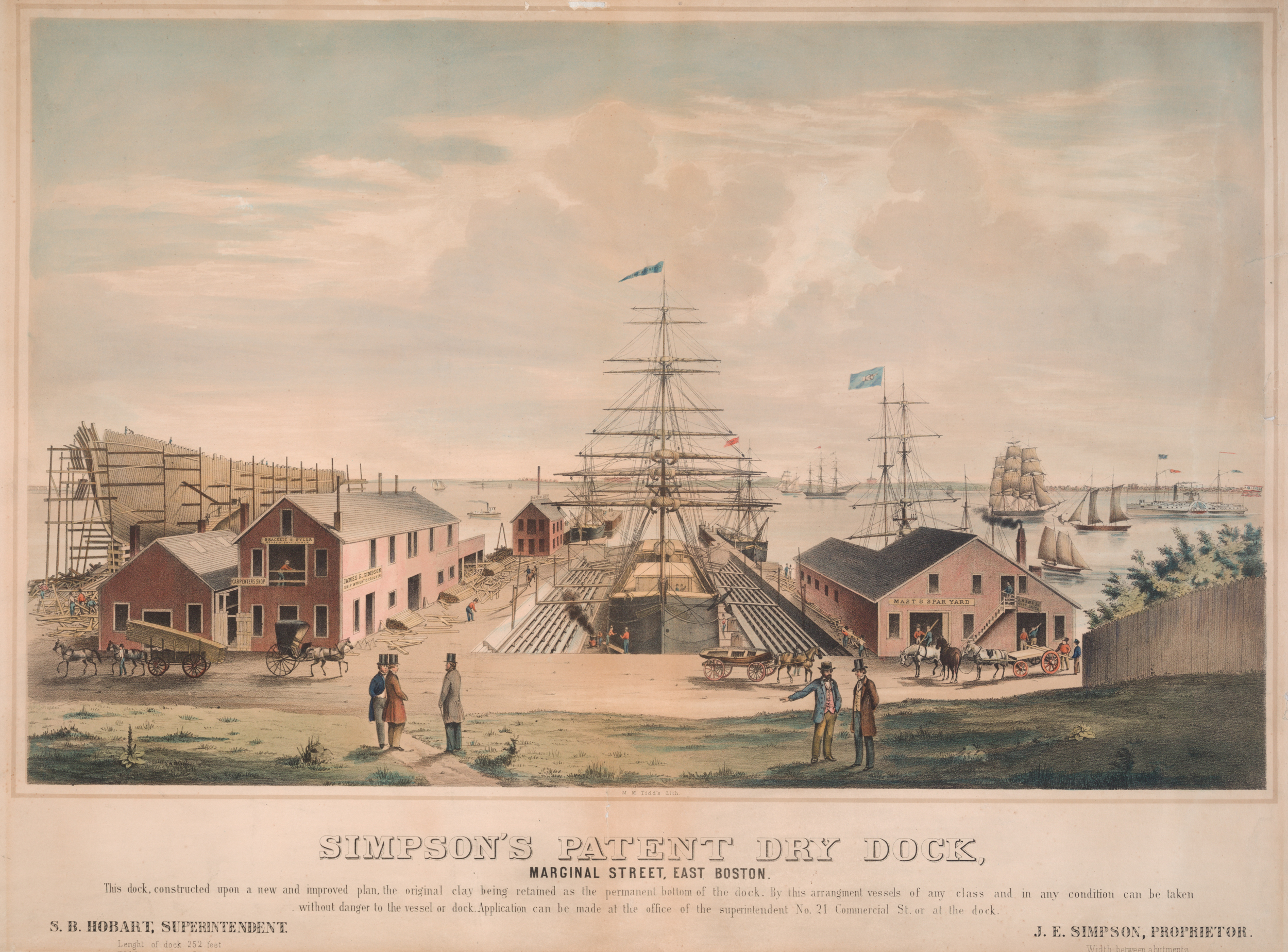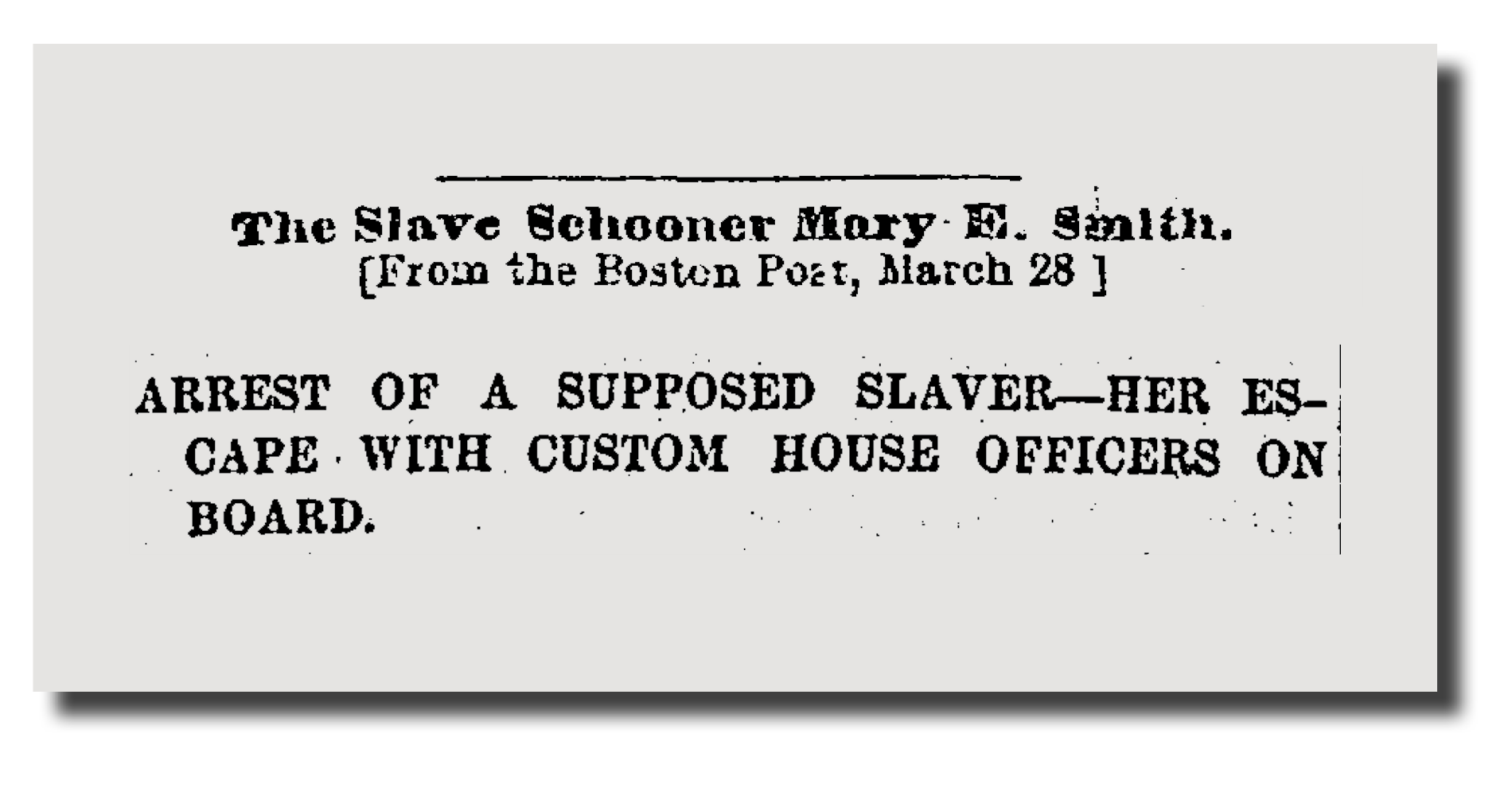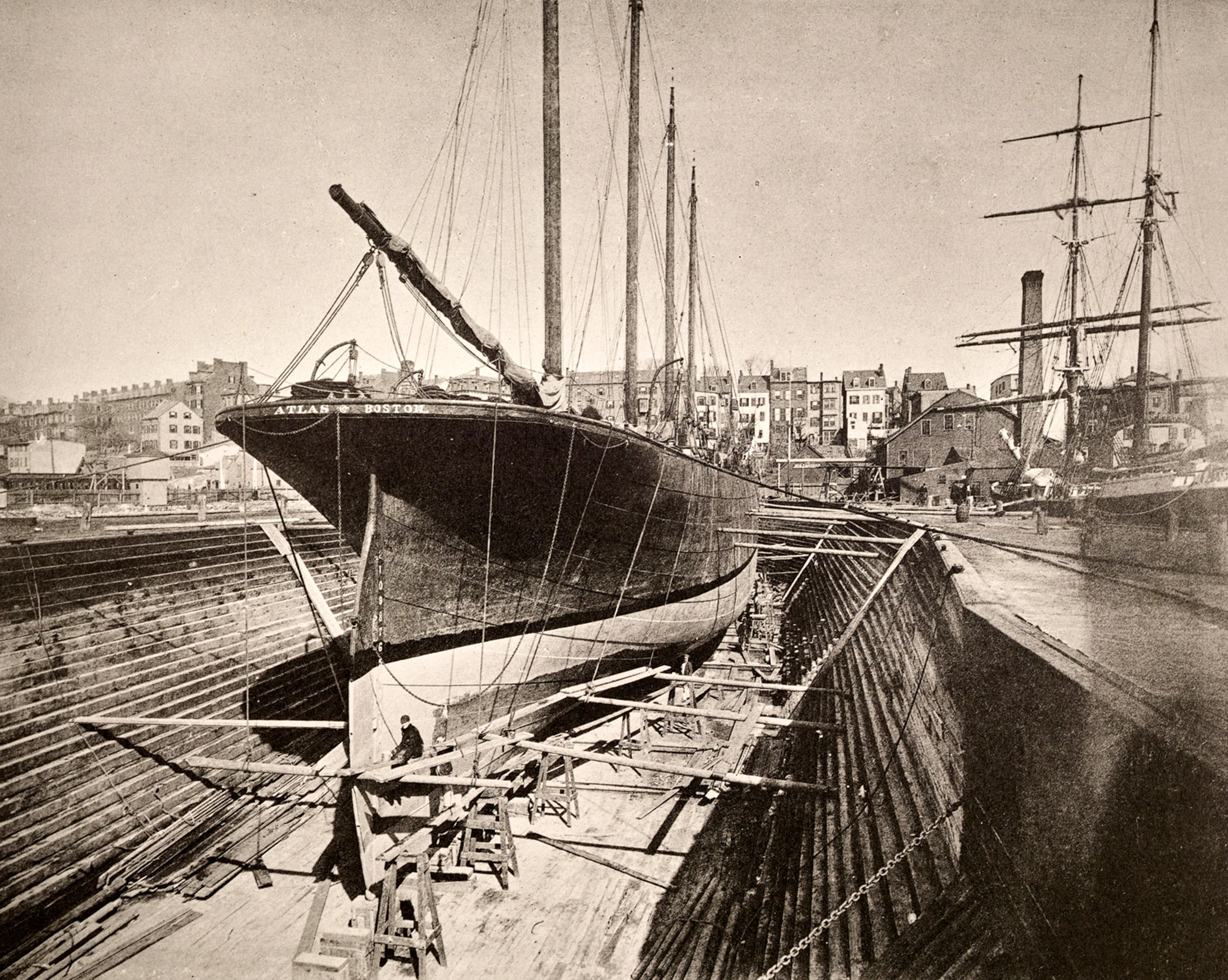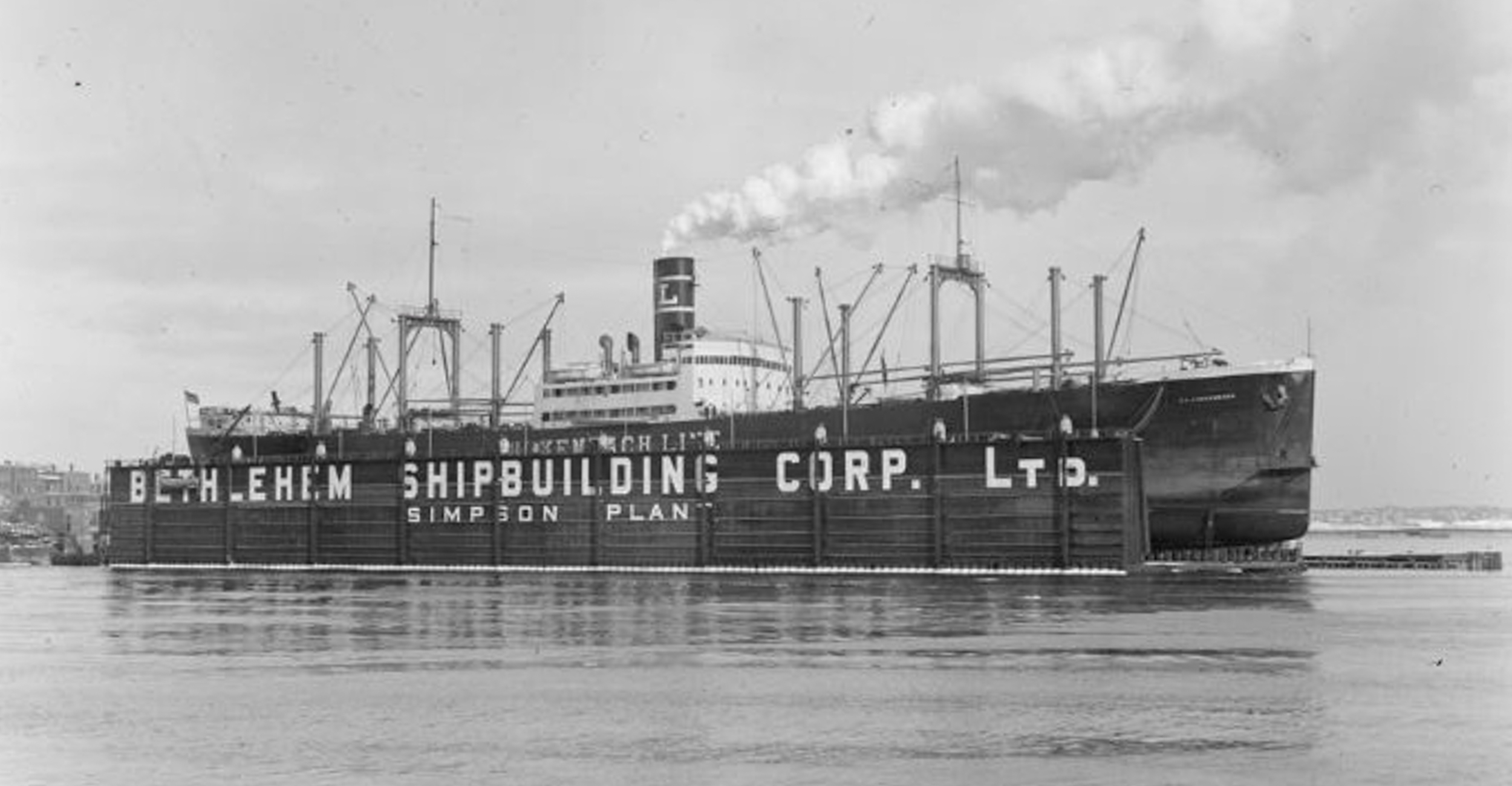Simpson’s Dry Dock
in East Boston
(awaiting installation)
Lithograph c. 1860 courtesy of the Boston Athenaeum
Shipwright James E. Simpson built three dry docks on this site between 1853 and 1864. Dry docks give workers access to a ship’s hull for maintenance and repairs.
In the early 1800s, most dry docks were built from stone, making them expensive and leaky. But Simpson invented a new construction technique: the site’s natural clay bed provided a watertight foundation, so the rest of the dry dock could be built inexpensively from wood. Simpson patented this design in 1854 and went on to construct dry docks in ports along the East Coast from Newfoundland to Virginia.
A ship repair business remained in continual operation at this site for over 130 years, first serving clipper ships, then Civil War navy vessels, and eventually modern steamships. Bethlehem Shipbuilding Corporation bought the business in 1922 and operated it until the 1980s when the dry docks closed and were eventually filled in. But the site’s legacy lived on – boats have continued to be serviced here into the 21st century.
James Simpson was arrested for his role in illegally outfitting the Mary E. Smith as a slave ship here in 1855, 47 years after the U.S. prohibited the African slave trade. Simpson’s case was ultimately discharged. The ship and crew evaded U.S. marshals in Boston and completed a transatlantic slave voyage before they were captured by authorities off the coast of Brazil. Of more than 400 African captives taken aboard, 170 died during or soon after the voyage.
Headlines from the Boston Post (top) and The Liberator (bottom), 1855
Bethlehem Shipbuilding supplemented the site’s three fixed, or graving, docks with two floating dry docks of different sizes. Floating docks ride on pontoons and can be moved wherever they are needed. Buoyancy chambers are flooded to lower the dock’s floor below the vessel’s keel and drained to raise the secured vessel above the waterline for repair.
Courtesy of Boston Public Library, Lesley Jones Collection
More …
Resources
- James E. Simpson. Dry Dock. US 12034 A, United States Patent and Trademark Office, 5 Dec. 1854.
- J.E. Simpson & Co. Views of Simpson’s Patent Improved Timber Dry Docks, Constructed by J.E. Simpson & Co., 35 Broadway, New York, USA. New York, W.I. Scandlon, 1888.
- Shipowners Association of the Pacific Coast, and Pacific American Steamship Association. “Bethlehem’s Purchase at East Boston.” Pacific Marine Review, Volume 20, 1923, pp 51, San Francisco, Calif.: J.S. Hines.
- “The Largest Dry Docks in the country, and probably the largest in the world, are located at the Erie Basin, South Brooklyn, N.Y.” Scientific American, 13 Jan. 1883.
- Mohl, Bruce. “Shipyard land goes to Massport for $10m.” Boston Globe, 13 Nov. 1985.
- “Purchases East Boston Ship Plant: Bethlehem Company Gets the Simpson Yard.” Boston Globe, 31 Oct. 1922.
- Torston Graden, Dale. “From Slavery to Freedom in Brazil: Bahia, 1835-1900.” Albuquerque, University of New Mexico Press, 2016.
- The Boston Post, March 28. “The Slave Schooner Mary E. Smith.” Weekly Herald, 5 April 1856, p. 107. Nineteenth Century U.S. Newspapers. Accessed 21 June 2020.
- The Boston Traveller. “Arrest of a Supposed Slaver-Her Escape with Custom House Officers on Board.” The Liberator, 7 September 1855, p. 143. Accessed 21 June 2020.
Acknowledgments
- Thank you to Nancy Seasholes for her assistance and support.





